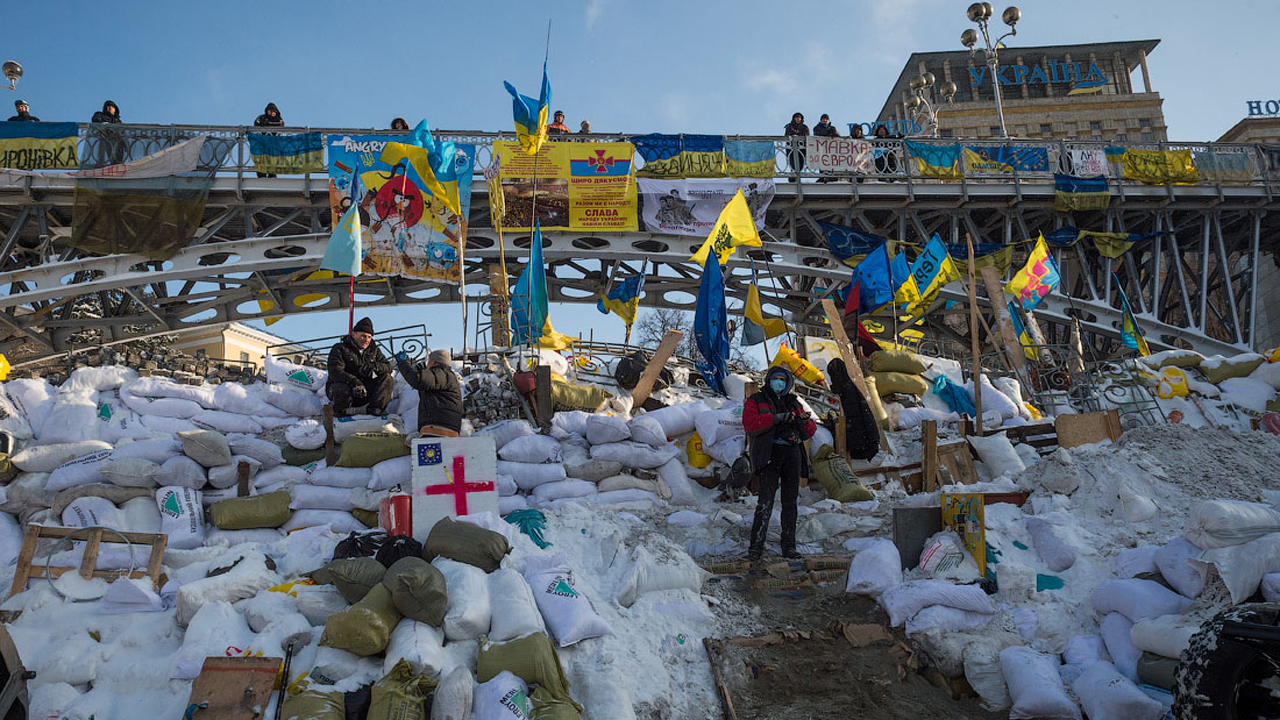After weeks of civil unrest in Kiev, the fiery combat in the occupied streets and the storming of police stations and government buildings, the protestors seem to be winning. The prime minister of Ukraine resigned today. The government has repealed most of the tyrannical new laws on freedom of speech and assembly. The heavily criticized President Yanukovych is promising concessions, like amnesty for arrested protesters and even a revision of the Constitution that will weaken his presidential powers.
Much of this can be credited to the fully mobilized, self-sufficient protest city built by the protestors in the center of Kiev. Independent photojournalist Ilya Varlamov — whose photos of barricades, blazing tire barriers, walls of smoke and fierce protestors firing DIY catapults at cops we posted last week — mapped and documented this protest city. Here are some of his most recent photographs.
Varlamov says the protestors have taken occupying to an art form, that it reminds him of “a small state with its own army, armory which consists of bottles, sticks and stones, food stock, mass media, shops and, of course, well-functioning border control.”
There are guards (and donation boxes) in the very few entrances into the protest city. There are piles of tires ready to be set on fire if attacked. The protestors are divided in troops and assigned commanding officers, medical aid personal and even someone to wave the banner, as they keep a “military discipline,” Varlamov describes. “They march and study the basics of street battle in their free time.”

Bricks from the upended cobblestone streets are piled by the barricades, ready to be thrown. Snowfall has glued the barriers — now 16 feet tall and fortified with barbed fire and metal bars. Last week, cops were pouring freezing water on protestors with fire hoses. This week, protestors have been using water as their weapon, pouring it on the enemy side of the barricades, so the frozen, icy walls are unscalable by cops.
The metro is operating as usual.

This is the infamous Grushevskogo Street. It’s not in flames, but still on fire.

The former streets are now de-facto pedestrian walkways, all traffic blocked unless they’re delivering supplies, instead, riddled with tents and watchtowers.

In the center of Maidan, political activists are giving speeches non-stop on the DIY stage.

The foreign press tents look pretty comfy, comparing to the makeshift huts of the general protesting population.

There is graffiti everywhere. It’s interesting how “ACAB” is a universal protest tag. Below, graffiti reads “Grushevskiy Cocktail” — Molotov cocktail renamed for the Grushevskogo Street, the cite of combat.

There are not only volunteers delivering clothes and firewood and providing medical aid. There are pop-up soup kitchens, with hot borscht and porridge.

Borscht is free, but cigarettes will cost you. This gentleman is a representative of the micro-economy, his cardboard and trash hut offering a few luxury items.

You can also get postcards at the nicer tents with EU flags draped over them, postcards with photos of occupied and crowded Maidan, if you’d like a glossy little souvenir.
Aside from patrolling guards and caring volunteers, there are people working — stuffing bags with snow and piling them high, dragging metal beams into the structures, constantly building, fortifying.
They’re not going anywhere. And plows won’t work on these barricades anymore. Only tanks can get them down.

(Photos: Ilya Varlamov)



